The Turntable Retirement Project
Comments
-
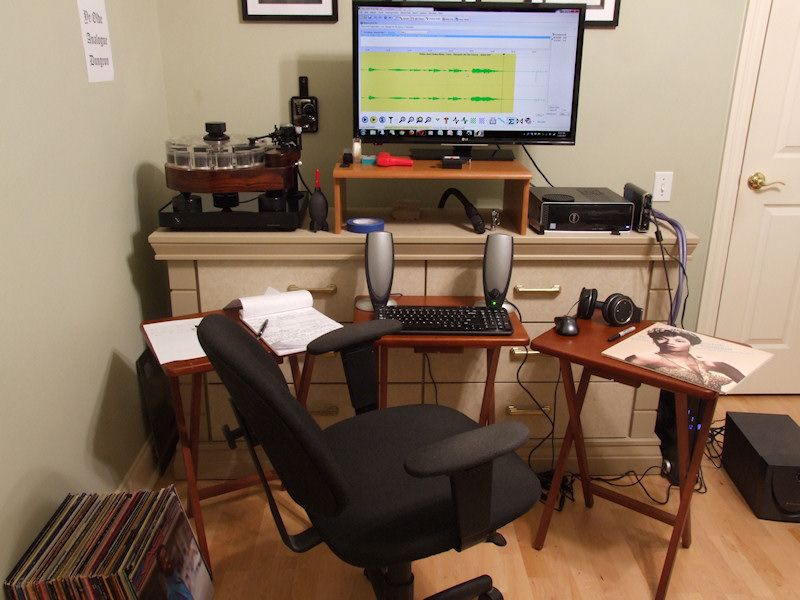
Figure 22. Vinyl ripping is suspended while the NuWave Phono Converter is back at PS Audio having the balanced input modification reversed. I will keep myself occupied by editing the 62 vinyl rips made just prior to sending the NPC back.
Comparing figure 22 to figure 21, in addition to the missing NPC, there is the addition of an Altec Lansing ADA745 2.1 computer speaker system for editing and playback.
When the NPC returns, I will have 29 more records to rip and process and then I'll be done. My first count indicated 269 records to rip, but that number was reduced after I found that CD versions were available for 75 of those records. Fortunately, most of those 75 titles were available as cheap used CDs. At an average 2 hours to rip and process an album to DSD digital format, that represents a time saving of about 150 hours.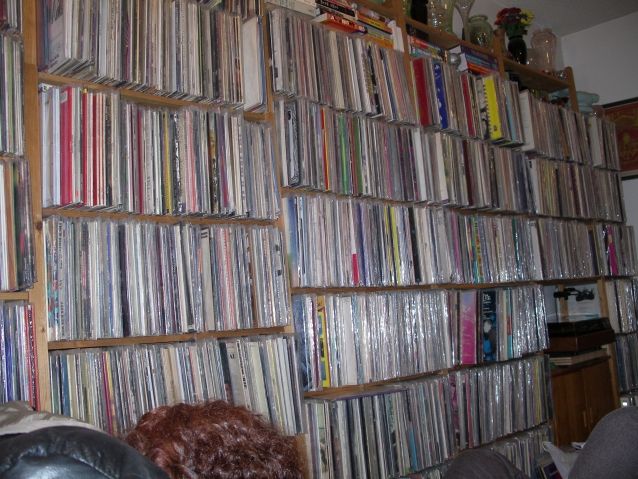
Figure 23. I'm glad I don't, and will never, have this amount of records.
In spite of the drudgery of real-time ripping, tracking down (or having to produce) album cover art, and editing song files, I have enjoyed going back through my vinyl collection. I am overjoyed that my record collection will be easily accessible and portable from now on. Even more than that, the biggest payoff from this tedious exercise is that the DSD rips of the vinyl records sound much better than playing the records from a turntable.
Therefore, I am not completely done with vinyl. I am completely done with vinyl playback. Going forward, I'll probably discover a record here and there that I want to add to my collection. I'll pull out my vinyl ripping setup similar to the way that I pull out my SACD ripping setup.
While ripping and editing, I noticed some consistencies in the quietness of vinyl surfaces from different record companies. In order of little to no surface noise, records from Arista, Blue Note, and Columbia sounded best. Warner Brothers records were "average" and records from Atlantic and Capitol were consistently the most noisy. Atlantic and Capitol also had the thinnest vinyl.
With respect to surface quietness, my Arista 45 rpm singles rival audiophile records from Classic Records and Analog Productions. However, the Arista records do not have the image weight and three-dimensionality of the heavier weight audiophile records.
While I am on the subject of audiophile records, and surface noise, one of my recent vinyl acquisitions was Classic Records' 4 LP box set of John Coltrane's "Blue Train" album. This rare, long out of print version commands a premium price of well over $100. It is pressed on 200 gram "Clarity Vinyl" that claims a superior level of surface quietness. For this disc, CR's claims were mostly true. The lead in and lead out grooves had faint snap, crackle, and pop similar to the sound made by Rice Krispies when you put your ear down to the bowl. My standard aggressive record cleaning regimen of steam cleaning and vacuuming followed by a double wash and vacuuming did not reduce the snap, crackle, pop one bit. This noise was also audible during the first minute of music play. However the DSD rip of this album sounded superior to a DSD rip of the SACD version and far superior to the vinyl record that the DSD rip was made from.
Figure 24. Coltran'e "Blue Train" pressed in Classic Records' 200 gram "Clarity Vinyl".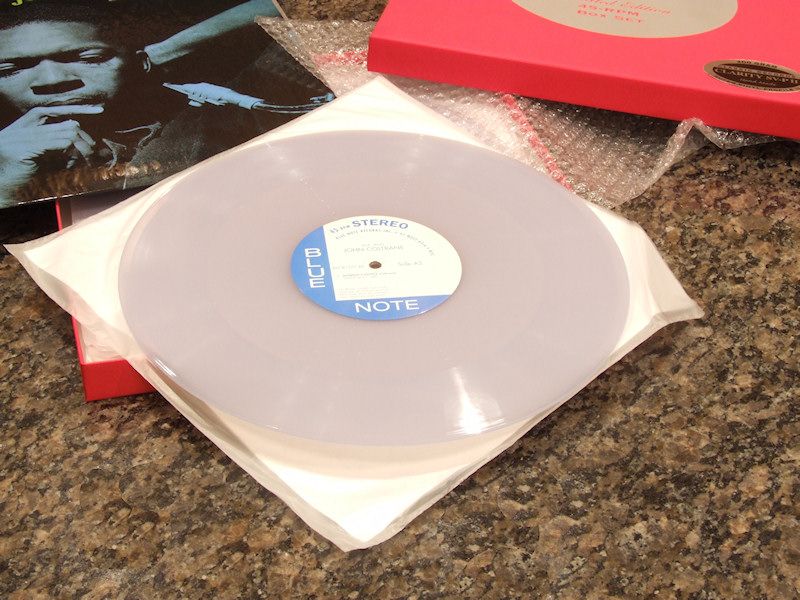
Figure 25. Classic Records claims that the slightly magnetic coloring agents in ordinary vinyl affect the resolution of phono cartridges, hence their handmade, proprietary clear "Clarity Vinyl".
I was originally planning to store my turntable after my vinyl collection was ripped. However, I have come to terms with my turntable and it is no longer a source of sonic bliss tainted with aggravating inconvenience. Whereas I did not like my turntable as a source component, I love it as a mechanical transcription device for transferring vinyl to a high resolution digital format.Proud and loyal citizen of the Digital Domain and Solid State Country! -
My acrylic turntable cage cover arrived today.
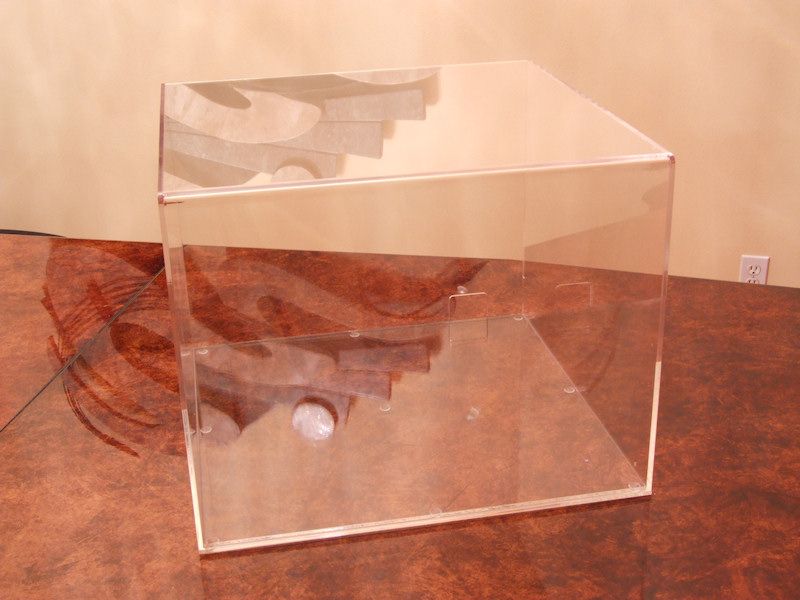
Figure 26. Turntable cover and base.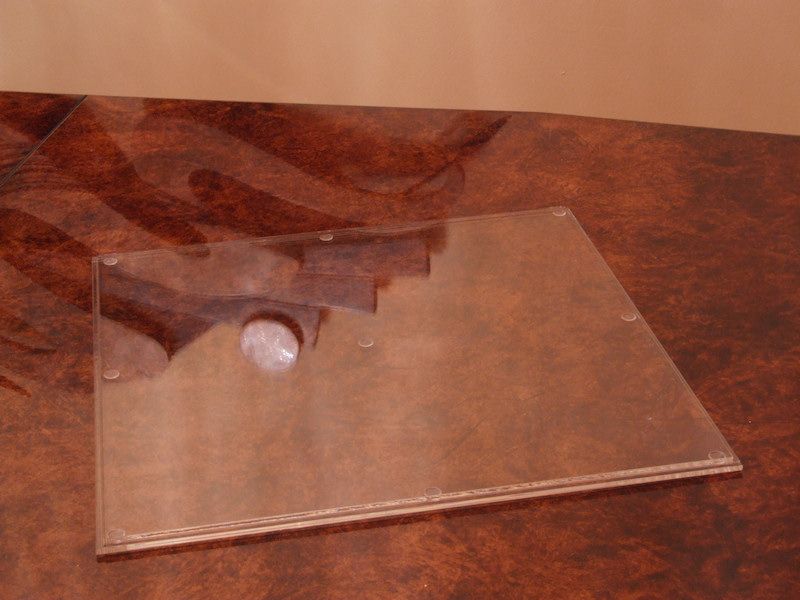
Figure 27. Stepped acrylic base.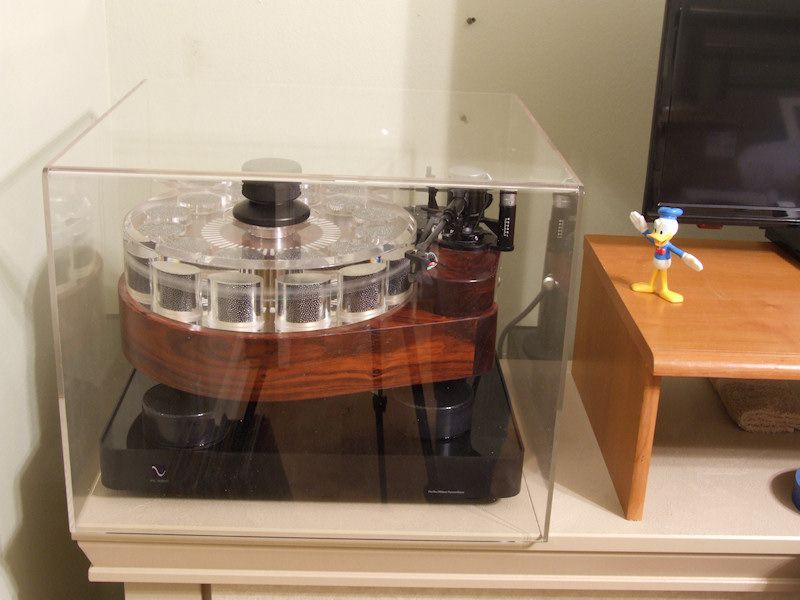
Figure 28. Daffy bids farewell. My turntable looks real nice trapped enclosed in its case....sort of like a museum relic. This isn't its final resting place. This was just a fitting to make sure everything was sized right.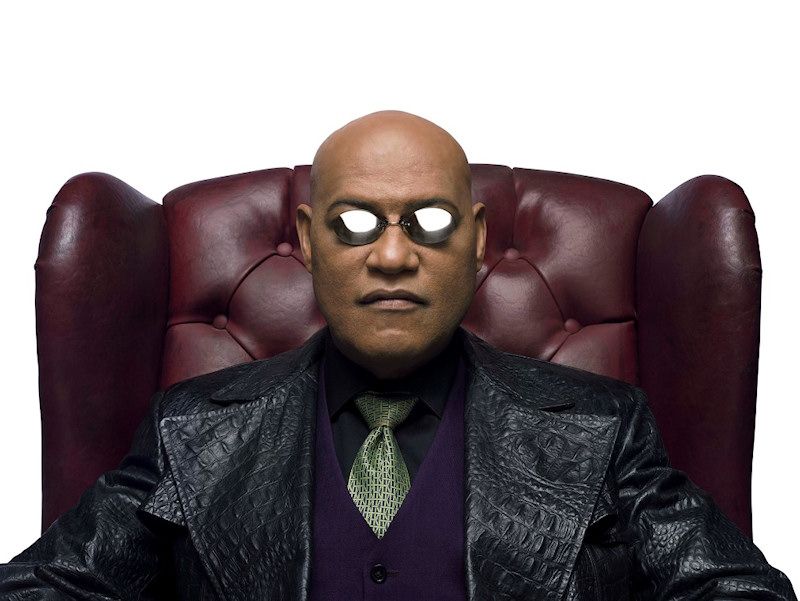
Figure 29. I enthusiastically took the red pill. The days of my rare, old, no-digital-version-available, music being trapped in a spiral vinyl matrix are over!Proud and loyal citizen of the Digital Domain and Solid State Country! -
Back when I used to listen to records, I had planned to get an acrylic dust cover for my turntable, but I never got around to it. Ironically, now that my turntable will be in a closet most of the time, I need a dust cover to protect it...not from dust...but from being bumped into and damaged.
I set it up in my two channel system one last time just to see what it would have looked like.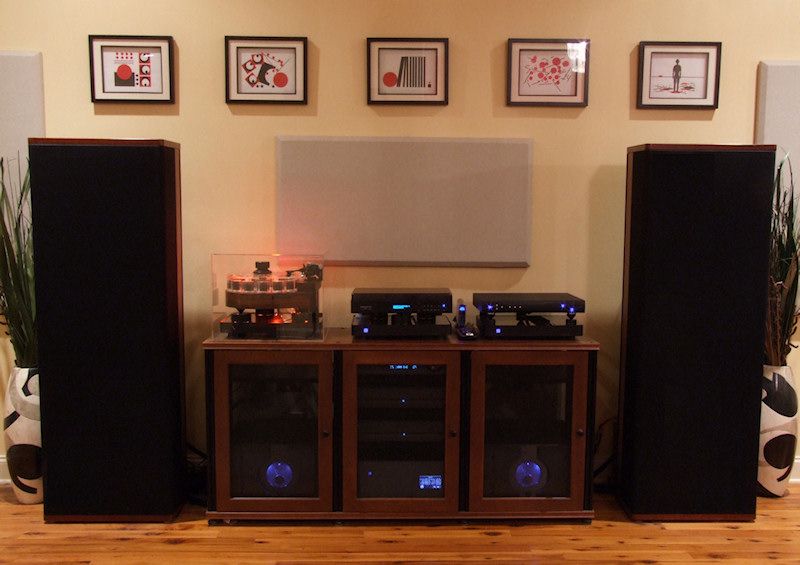
Figure 30.
Figure 31.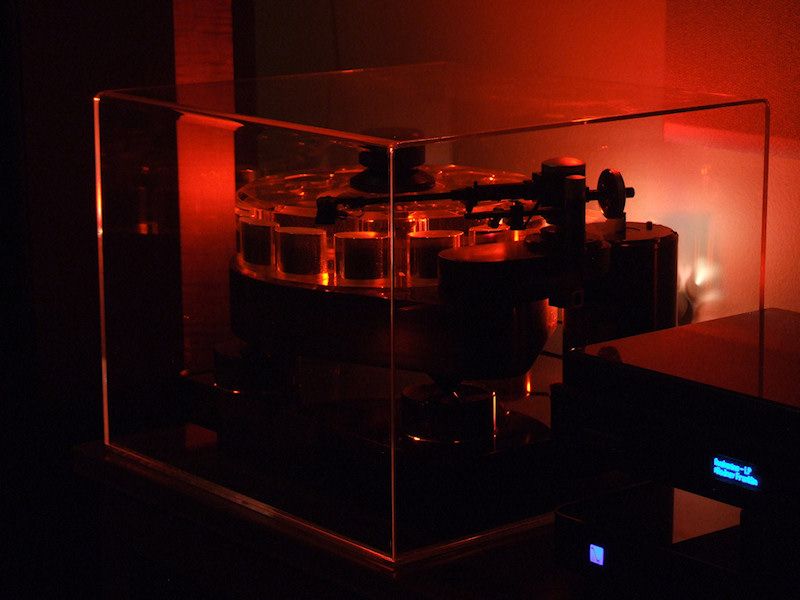
Figure 32.
Figure 33.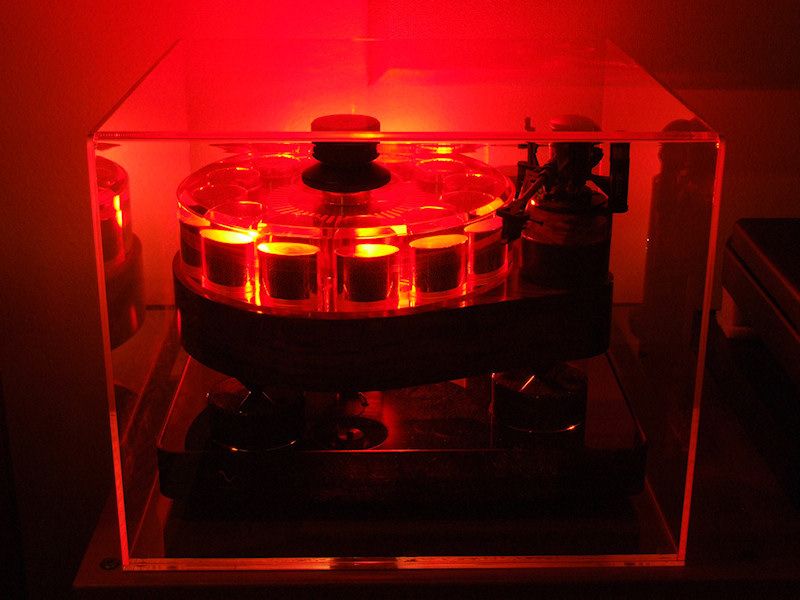
Figure 34.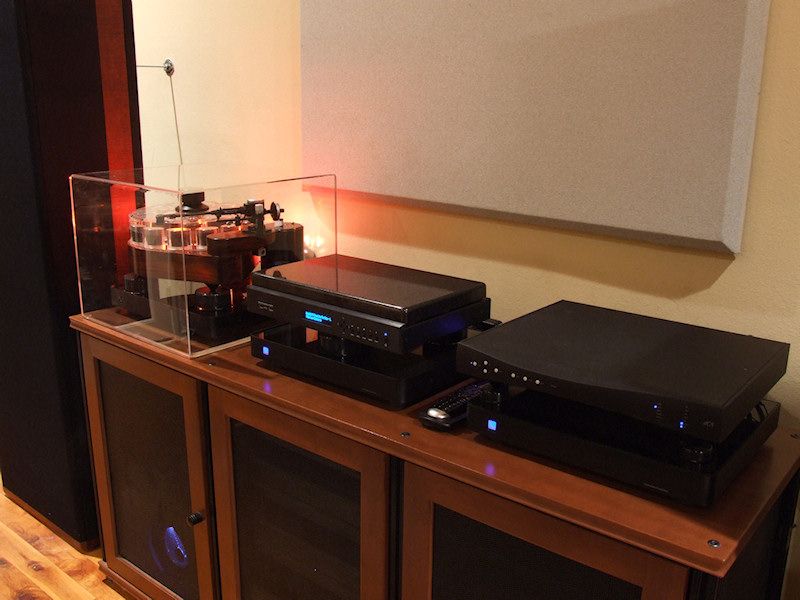
Figure 35.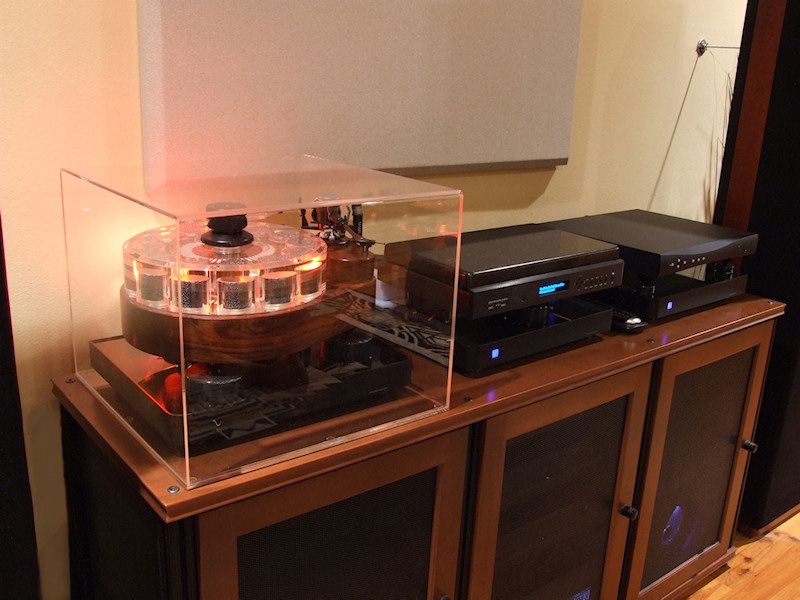
Figure 36.Proud and loyal citizen of the Digital Domain and Solid State Country! -
That turntable is way to nice to be in a closet, why not leave it displayed??
-
That turntable is way to nice to be in a closet, why not leave it displayed??
I agree; That is a magnificent looking tt. Who knows you might get the urge to fire it up occasionally to use as a reference point -
That turntable is way to nice to be in a closet, why not leave it displayed??
I don't play records anymore, therefore I needed to move the turntable off my two channel equipment cabinet to make space for my master clock. I considered displaying the turntable in its case on a pedestal in either the foyer or next to the two channel system. I even priced some 20" x 20" x 36" art pedestals. I'll let it sit out of sight for a while...see if I miss it.motorstereo wrote: »I agree; That is a magnificent looking tt. Who knows you might get the urge to fire it up occasionally to use as a reference point
I will fire it up whenever I need to rip the occasional LP to DSD digital.
Proud and loyal citizen of the Digital Domain and Solid State Country! -
I also agree, too nice of a TT to be stuffed in a closet. Sell it off if your going to do that. Display it, looking at it physically every so often may bring back the urge to fire it up.
If you choose to sell it off, give Mr. Wagner a call first. It appears he has an appetite for quality gear from coast to coast. HT SYSTEM-
HT SYSTEM-
Sony 850c 4k
Pioneer elite vhx 21
Sony 4k BRP
SVS SB-2000
Polk Sig. 20's
Polk FX500 surrounds
Cables-
Acoustic zen Satori speaker cables
Acoustic zen Matrix 2 IC's
Wireworld eclipse 7 ic's
Audio metallurgy ga-o digital cable
Kitchen
Sonos zp90
Grant Fidelity tube dac
B&k 1420
lsi 9's -
I also agree, too nice of a TT to be stuffed in a closet. Sell it off if your going to do that. Display it, looking at it physically every so often may bring back the urge to fire it up.
It sat idle on top of my equipment cabinet for many months after I installed the Debussy DAC/U-Clock system.
I need to keep it for the occasional LP I might need to transfer to digital or if I need to redo a previous transfer.If you choose to sell it off, give Mr. Wagner a call first. It appears he has an appetite for quality gear from coast to coast.
Who is Mr. Wagner?
Proud and loyal citizen of the Digital Domain and Solid State Country! -
WagnerRCHT SYSTEM-
Sony 850c 4k
Pioneer elite vhx 21
Sony 4k BRP
SVS SB-2000
Polk Sig. 20's
Polk FX500 surrounds
Cables-
Acoustic zen Satori speaker cables
Acoustic zen Matrix 2 IC's
Wireworld eclipse 7 ic's
Audio metallurgy ga-o digital cable
Kitchen
Sonos zp90
Grant Fidelity tube dac
B&k 1420
lsi 9's -
This content has been removed.
-
DonnerUndBlitzen wrote: »Why I am nearly done with vinyl:
Nearly 4 years ago I moved to Tacoma WA and my thousand plus classical music collection made the move with me. I also had two nice Techniques turntables and 2 quality Sure magnetic cartridges that came along for the ride.
I have converted over 70 lps to digital. I got good results. But to get those good results requires time!: the conversion process is very time consuming. My biggest problem with converting vinyl to digital was that it affected how I enjoyed music. Instead of easy, pleasurable listening, I listened as a critical recording engineer. I want to enjoy the music, not fuss about the audible lp junk that still remained and now was in the digital file.
So, I’ve gotten rid of my nice turntables/cartridges and have a cheapo USB to computer record player. I’ve also got rid of over 700 lps. Most of the lps I was able to replace with CDs, or find other orchestras/conductors to fill in the gaps. Between my CDs and Spotify, I spend my time listening. I don’t want to be a recording engineer. Spotify has a wonderful classical collection and has almost everything I have on CD and Vinyl and then some.
I hope to get rid of about 90 percent of what remains and only keep some for nostalgia’s sake.
Grew up in Tacoma, now in Puyallup. Bunch of other Polkies in the area. We need to plan another GTG soon, been too long... -
This content has been removed.
-
^^^ o.k. got it.

-
This content has been removed.
-
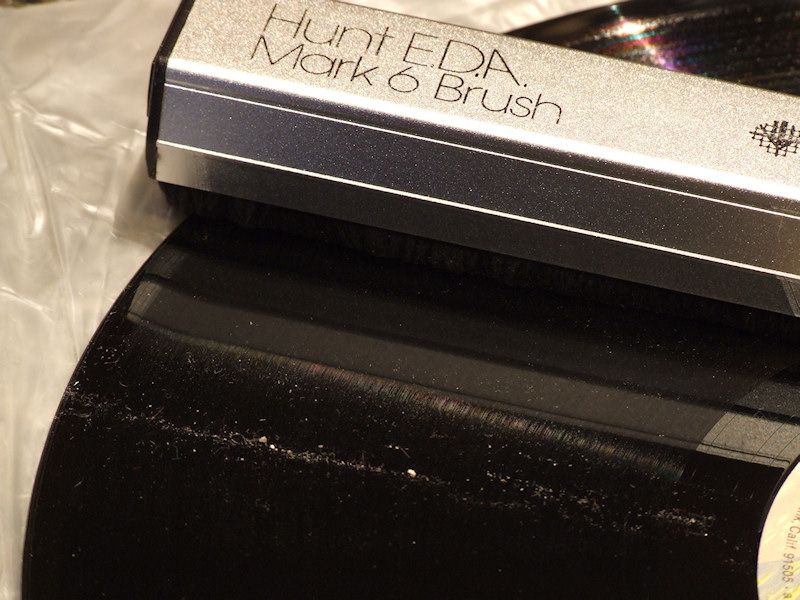
Figure 37. See why I hate vinyl? It often comes from the factory noisy and filty!
This is a picture of the dirt dug out of the grooves of a brand new, still in the factory shrink wrap, record. This record was a replacement for a record that had an audible warp.
I had to repurchase a few of my older records due to my copies being badly warped or too much surface noise. Fortunately, in most cases, I could find a brand new copy or a used near mint copy at a reasonable price.
There are only 15 more records left to rip and process...then I'm free.Proud and loyal citizen of the Digital Domain and Solid State Country! -
I get it. I wasn't a vinyl guy for the longest time. It is a finicky picky thing, cartridges are like tubes, they all have their flavor and get expensive. I love my digital, and I have a problem, I absolutely love physical media. CDs, blurays, LPs, I love them all. Sometimes simple is better, music at the finger tips, no TT, phono preamp, all the tools and cleaning supplies, extra cables. I will never head too deep into vinyl. Personally I enjoy having all types of media in my system, and they all sound very good. I don't have the patience for hours and hours of ripping.2 channel:
Bryston 4B3, Bryston BDA3, Cary SLP05, Shanling CDT1000SE with parts conneXion level 2 mods, Nottingham analogue ace space 294, soundsmith Carmen MKii, Zu DL103 MKii, Ortofon MC 20 MKii, Dynavector XX2 MKii, Rogue Audio Ares, Core power technologies balanced power conditioner, Akiko Corelli power conditioner with Akiko Audio HQ power cable, Nordost heimdall 2, Frey 2, interconnects, speaker and power cables, Focal Electra 1028 BE 2, Auralic Aries Femto, Black diamond racing cones, ingress audio level 1 roller blocks, JL Audio E110 with Auralic subdude, Primacoustics room treatments.
Theater:
Focal Aria 926,905,CC900, SVS PB ultra x2. Pioneer Elite SC85, Oppo BDP93, Panamax M5400PM, Minix neox6, Nordost Blue heaven LS power cables. -
I don't have the patience either, but I do what I have to do.Proud and loyal citizen of the Digital Domain and Solid State Country!
-
Waiting patiently for the "Turn Table Un-Retirement" thread to start.
-
You must have missed the part where I said my digital rips sound better than the records.Proud and loyal citizen of the Digital Domain and Solid State Country!
-
Didn't miss it. Just think that you're going to miss the physical act of playing records, and making those little tweaks to coax a better sound out of your gear.
The challenge now is to make the analog sound better than the digital. I have a feeling that at some point in time you're going to begin to wonder if it's possible. -
Didn't miss it. Just think that you're going to miss the physical act of playing records,....
I understand that some people really enjoy handling and cleaning records, lowering the stylus onto the record surface, and frequently going back and forth between the listening chair and the turntable. I don't.
So no, I am not going to miss:
1. "Kid gloves" handling of easily damaged, easily soiled, vinyl.
2. Brushing, scrubbing, washing, and vacuuming records.
3. Replacing expensive high end cartridges.
4. Tedius setup and alignment rituals.
5. The manual labor involved in a listening session.
6. No convenient way of skipping the tracks I am not interested in, or repeating the tracks I am interested in....and making those little tweaks to coax a better sound out of your gear.
Digital provides loads of opportunities for tweaking.The challenge now is to make the analog sound better than the digital.
The real challenge is how to make analog sound better than digital without a high five or six figure investment.
Adding more mass to the turntable, isolating the turntable in a separate room from the speakers, cartridges with the best contact shapes and signal generators, and tonearms with the best tracking and signal integrity properties are very expensive solutions.I have a feeling that at some point in time you're going to begin to wonder if it's possible.
Oh no, I already know it's possible, both from a theoretical and from a current technology standpoint. A good digital signal is only a close approximation of an analog waveform, and theoretically, an approximation can never be as good as the thing it approximates.
However, for less than wallet-crushing investments, the mechanical and electrical noise issues with vinyl typically overwhelm its higher resolution capabilities.
That is why my turntable will be stored in a closet after my vinyl ripping project is completed.Proud and loyal citizen of the Digital Domain and Solid State Country! -
I feel it's nice to not be able to skip tracks. I listen to albums in their entirety the intended way, not one song from this album, two from this other one, etc.
When I'm afforded the option of skipping I usually take it and most of the time the experience of that album suffers for it unless we're talking about pop or radio friendly metal and rock.Post edited by Nightfall onafterburnt wrote: »They didn't speak a word of English, they were from South Carolina.
Village Idiot of Club Polk -
I agree completely with your approach and procedure. LPs just take a lot of work to play music well. And it's all about the music. As Frank Zappa said "music id the best".
-
Endgame
I love a nice rack!!! I selected a sturdy steel Samson SRK8 studio rack with locking wheels to house my vinyl ripping setup.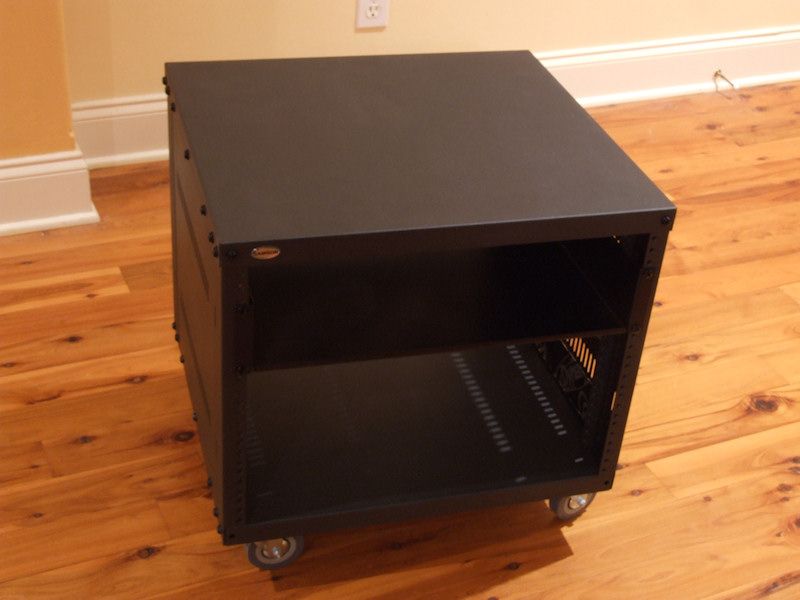
Figure 38. Samson SRK8 studio rack.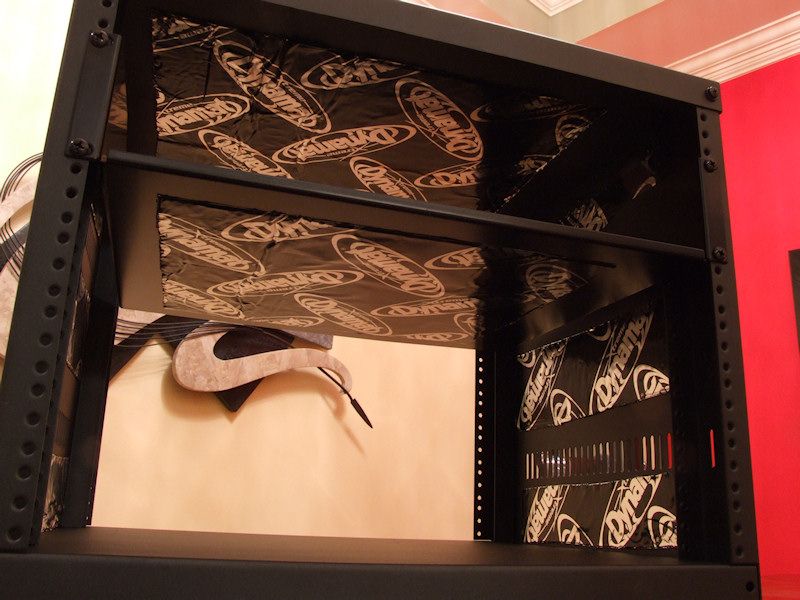
Figure 39. A little lot of Dynamat Xtreme never hurts.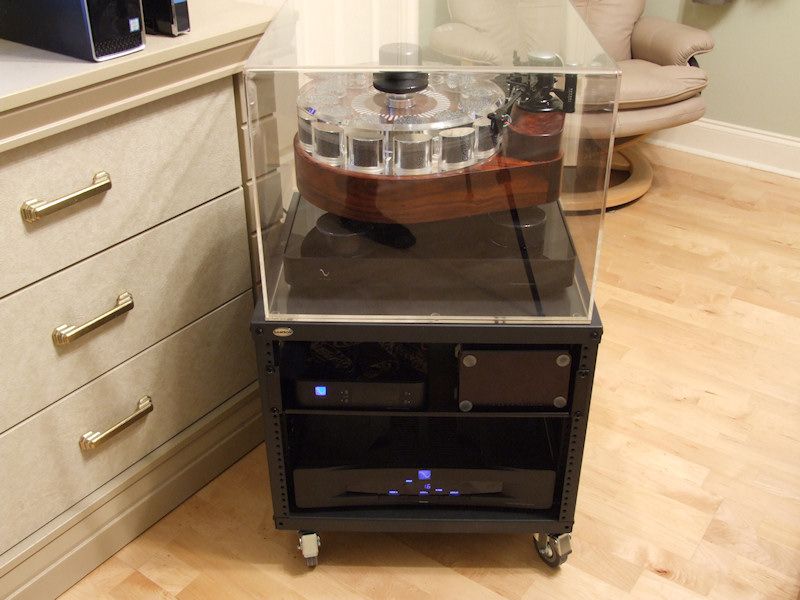
Figure 40. Vinyl ripping system top to bottom: turntable, PS Audio NuWave phono stage/analog to digital converter, turntable motor power supply, PS Audio Power Plant Premier AC regenerator.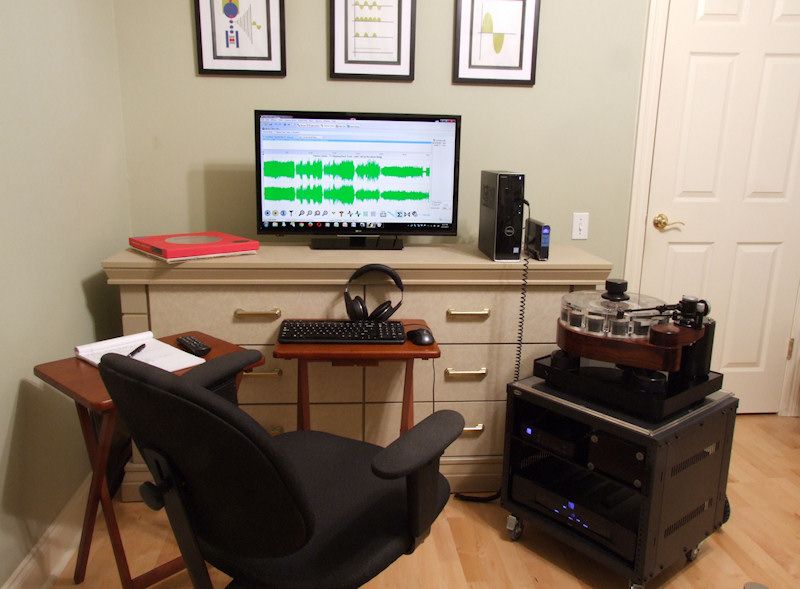
Figure 41. Testing the racked vinyl ripping rig.
I did some proximity tests prior to ordering the rack to make sure there weren't any issues with hum or other noise with the turntable, NuWave ADC, turntable power supply, and AC regenerator being close to each other. The rips made with this configuration sound identical to those made with the turntable on top of the heavy two channel audio cabinet and on top of the heavy bedroom chest.
Although I am through with vinyl as a playback medium, there will probably be the occasional LP that interests me. When those few and far between LP purchases occur, I will just roll the vinyl ripping equipment rack out of the closet, connect the ADC to the mini desktop computer, do the deed, and roll the rack back into the closet when things are done. Wham, bam!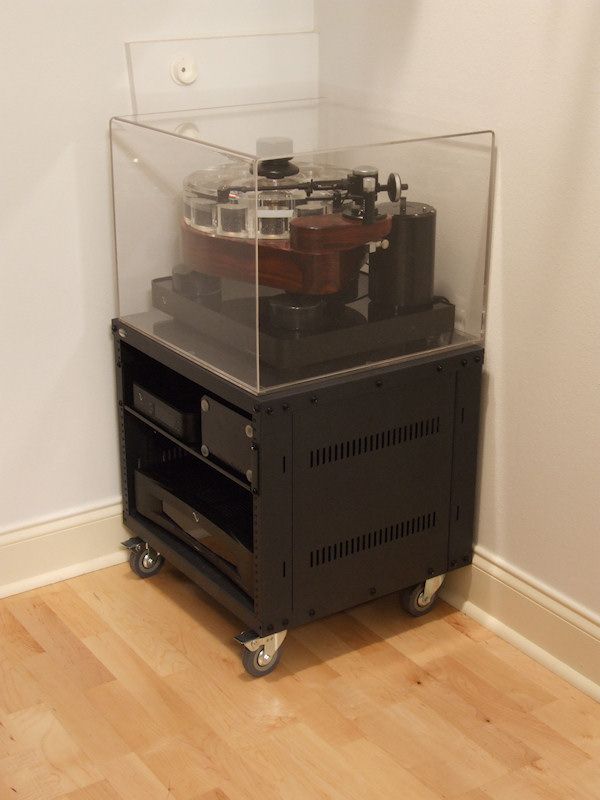
Figure 42. Out of sight. My exotically beautiful cocobolo wood and acrylic turntable occupies a place befitting such an esteemed technical relic. I draped a bed sheet over everything after it was tucked into its closet corner. Sleep well, beautiful.
In the future, when I'm more dedicated to audio than I am now, and when I have a large room specifically for audio, I ***might*** set up the turntable in a rear corner of that room and illuminate it with some dramatic back lighting.
Discussion Of Results - FREE AT LAST!
Prior to this vinyl digitization project, 28% of my music collection was locked up in inconveniently accessible and non-portable vinyl records. A prior count showed a total of 282 records that did not have digital counterparts (CD or SACD) in my collection. Those records consisted of 215 albums and 67 7" and 12" singles. A resurvey of the marketplace indicated that 86 of the 215 albums had CD counterparts available. Most of these were higher quality remasters of the original LP master tapes. These CD purchases reduced my ripping workload to 129 albums and 67 singles. That work took 3.5 months to complete working part time from November of 2016 to February of 2017. A single disc album took an average of two hours to process, inclusive of ripping, splitting into individual tracks, searching for cover art, and typing in the descriptive meta data for the song files, and backing up.
All records were ripped to single rate DSD (.dsf) files. I have the option to down-convert these files to PCM for vehicular and portable player use. In addition to the convenience and portability of digital files, I was surprised that the digital transfers sounded much better, particularly in the bass region, than the original LPs. I discussed this in more detail in a prior post in this thread.
My audiophile LPs (30 total) and all singles were ripped using a Pass Labs XP-25 phono stage between the turntable and the PS Audio NuWave analog to digtal converter. Albums of average recording quality were ripped using the NuWave's built-in phono stage. With those albums, the XP-25's advantages in spatial performance, clarity, detail, and background quietness, were not as apparent, and, most importantly, the NuWave's phono stage still produced digital transfers that sounded better than the LPs. The XP-25 was sold after the audiophile albums and singles were ripped.
The NuWave also had the valuable feature of variable gain in 3 dB increments from 18 dB to 78 dB. The XP-25 only had three gain settings of 53, 66, and 76 dB respectively. The two lowest settings were unsuitable for ripping. With the NuWave, most albums were ripped at a gain setting of 75 dB. A few required the maximum setting of 78 dB and a few required a reduction to 72 dB.
The total cost of the project was $2,627 as follows:
CD and record purchases $906
NuWave Phono Converter $999
Balanced Input Mod for NuWave $247
Samson SRK8 Studio Rack $205
Acrylic Turntable Cover $270
Total $2,627
The cost of the project was more than offset by the sale of the XP-25. Everything was money well spent except the NuWave modification. The NuWave balanced input modification turned out to be a waste of time and money because the mod caused the input gain, which is not user-adjustable, to be reduced to a level that was too low for ripping. It was explained that the lower gain was to provide greater overhead to prevent overloading in live recording applications. Prior to sending the unit for modification, I made it clear that I was going to use it for vinyl ripping only. Therefore no provisions should have been made for live recording. PS Audio offered to increase the input gain, but I chose to send the unit back to be restored to stock condition.
It's great fantastic to have my entire music collection at my fingertips. For the past three months, I have been binging on my ripped LP files, particularly the gems I had forgotten I owned. Such Good Sound!Proud and loyal citizen of the Digital Domain and Solid State Country! -
Now lies the question.....what difference a good set of spikes would add to your vinyl ripping rig/project over the casters used on the Samson rack?
The only way to determine that is to rip the entire library again and compare....
JK....nice setup and glad to hear the setup worked as intended with such good results. -
Now lies the question.....what difference a good set of spikes would add to your vinyl ripping rig/project over the casters used on the Samson rack?
I had some concern about that and I did compare the same tracks recorded with the turntable on the Samson rack, the bedroom chest, and the two channel equipment cabinet. They were all sonically identical.
When the Samson rack's casters are locked there is no play in them whatsoever.
There was a big difference between using the turntable with and without the PS Audio Powerbase isolation platform.
Of course, I wouldn't use the Samson rack in a situation where I was using the turntable as a source component in a room with loudspeakers.The only way to determine that is to rip the entire library again and compare....
Comparing a variety of well recorded tracks would suffice. Proud and loyal citizen of the Digital Domain and Solid State Country!
Proud and loyal citizen of the Digital Domain and Solid State Country! -
DarqueKnight wrote: »I had some concern about that and I did compare the same tracks recorded with the turntable on the Samson rack, the bedroom chest, and the two channel equipment cabinet. They were all sonically identical.
Very good info.
For me to think that even in a humorous fashion that you would have not considered those options...
Great write up as usual, thanks again for your contributions.
-
Raife, I am glad that I am as dedicated to audio as you are LOL!
Very interesting story from beginning to end. I have a large FLAC collection on a Raid server. 3 TB of the 6 TB are available. I have about 6,000 CDs on there. Only and handful (100?) are DSDs. I do enjoy the convenience of using a tablet to select and play the FLACs and aiff files on my system. But, I just can't give up the vinyl. Maybe it's a ritual thing or simply because I am a "baby boomer". The temptation of playing the licorice disks will probably never go away for me.
Thanks for the write-up and your technical write up of your critical listening skills. I always am inspired by your passion for the hobby!Carl -
I took my records record rips to work today. Sonic bliss!Proud and loyal citizen of the Digital Domain and Solid State Country!
-
....AND, onto the next retirement program.....yours.
 HT SYSTEM-
HT SYSTEM-
Sony 850c 4k
Pioneer elite vhx 21
Sony 4k BRP
SVS SB-2000
Polk Sig. 20's
Polk FX500 surrounds
Cables-
Acoustic zen Satori speaker cables
Acoustic zen Matrix 2 IC's
Wireworld eclipse 7 ic's
Audio metallurgy ga-o digital cable
Kitchen
Sonos zp90
Grant Fidelity tube dac
B&k 1420
lsi 9's







